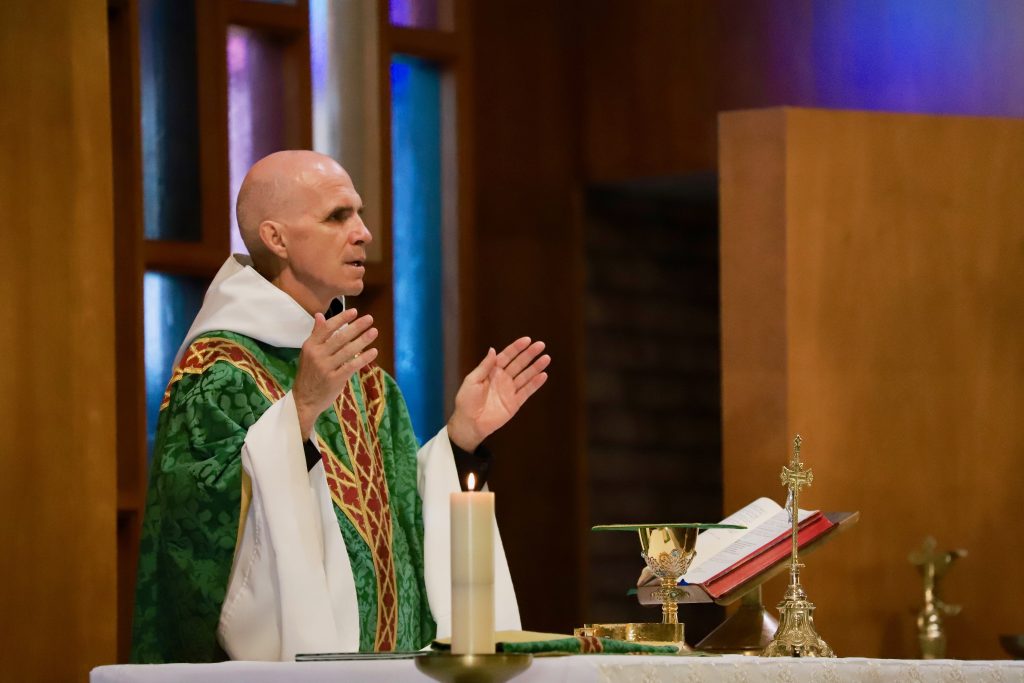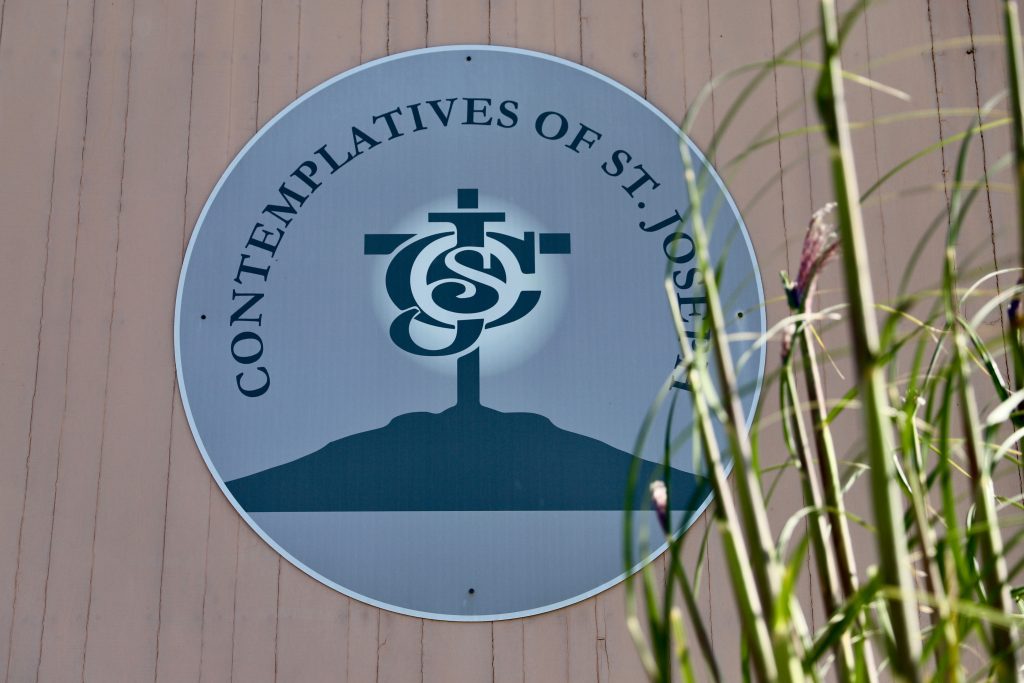Contemplatives of St. Joseph bring monastic spirituality to South San Francisco parish
By Emma Johanningsmeier
As the founder of the Contemplatives of St. Joseph, a religious family created to serve the Archdiocese of San Francisco, Father Vito Perrone always imagined creating an urban oasis where people could come and pray. When he moved into the former convent at Mater Dolorosa Parish over a decade ago, he had no idea the parish would become that place. But after being appointed pastor of the church July 1, he’s wasted no time getting to work.
Nestled in a quiet South San Francisco neighborhood in the shadow of San Bruno Mountain, the church opens for adoration and private prayer at 6 a.m. At 7, there’s chanted lauds with the COSJ community, followed by “deep listening” to Scripture readings. Then there’s morning Mass, three hours of adoration and a midday Mass in the extraordinary form. Following an afternoon break, the church reopens for vespers, another hour of adoration and compline. The day concludes at 7 p.m. with prayers to Our Lady of Sorrows and St. Joseph and a blessing with holy water.
“People are so excited about Father Vito,” said parish manager Fran Lidwell. “We’re getting a lot of phone calls. People are like, ‘You mean I can come in anytime? Am I free to drop in? Is it really 6 a.m.? Can I come in before work?’ And I’m like, ‘Yes, yes, yes.’”
While Mater Dolorosa’s daily schedule seems dramatic, Father Perrone said it’s actually quite straightforward and places the parish on a more monastic schedule of prayer. The COSJ religious used to chant the Divine Office and pray before the Blessed Sacrament in their private monastery chapel across the parking lot. Now they do the same things in the church sanctuary – and the whole parish is invited. “We want everybody to come and join us,” Father Perrone said in a recent interview.
By January, Father Perrone expects to have enough Eucharistic adorers to keep the church open all day, and he’s aiming for round-the-clock adoration within three years. “This is our way of serving the whole parish, of creating an atmosphere where they can come for five minutes, 10 minutes or 10 hours,” he said. “It’s just a place to stop and be touched in their soul by Christ in the Eucharist.”
Among the people swept into service at Mater Dolorosa by Father Perrone’s appointment is Third Order COSJ member Betti Magoolahan, a licensed marriage and family therapist hired to provide free short-term therapy for parishioners. “There’s so much human formation that needs to take place, mixed with the spiritual formation,” said Father Perrone. “We’re probably the only parish that’s doing this, but I can see it for sure taking place much more.”
Father Perrone is already a familiar face, says director of religious education Felisa Cepeda, having helped out with Masses and confessions at the parish for years. The kids’ burning question is about the new pastor’s different outfit.
“It’s nice to have a religious order, especially one with sisters, visible in the community,” Cepeda said. “I grew up with the Sisters of Mercy. But these kids and these families, they haven’t had that experience. We talk about vocations to religious life, but people don’t know what religious life is.”
Father Perrone always felt a strong call to the contemplative life. As a young man, he read deeply in the mystical tradition, and before becoming a diocesan priest in San Francisco, he seriously discerned a vocation to monastic life. While serving at different Bay Area parishes in the early 2000s, he maintained a strong personal prayer life, but still felt the desire for “a more focused life of contemplation and prayer.”
It was on a pilgrimage to St. Joseph’s Oratory in Montreal, where he found himself unexpectedly alone during a blizzard, that the idea of forming a new contemplative community within the Archdiocese came to him. In 2010, after a half-decade of discernment, he received then-Archbishop George H. Niederauer’s blessing and moved into the Mater Dolorosa convent building and started fixing it up.
His first companion, Father Joseph Homick, COSJ – who this year became parochial vicar at Mater Dolorosa – arrived in 2012. The following year, Archbishop Salvatore J. Cordileone made the COSJ a public clerical association of the Christian faithful, a formal step toward the formation of a religious order. A third order for laypeople launched a few years later, and since 2018, the COSJ has also welcomed female religious vocations. Although the community is currently small, Father Perrone expects it to grow now that it has a long-term home.
Today, COSJ members serve in active apostolates including at St. Patrick’s Seminary & University and with the Missionaries of Charity. Before the pandemic, their monthly healing Mass incorporating the oil used by St. André Bessette (which they plan to relaunch later this year) typically attracted approximately 150 people. The community also has the unique distinction of celebrating the Byzantine Divine Liturgy as well as the ordinary and extraordinary forms of the Mass.
Recognizing that adoration, contemplative spirituality and liturgical diversity are new to many lay Catholics, Father Perrone plans to hold workshops on these and other topics. People are eager to engage with what he’s offering, Lidwell said.
“I think it’s kind of contagious, our response to God,” she said. “I think a lot of the time we’re yearning for a deeper relationship with God and more time in prayer. But we oftentimes need a pastor to say, ‘There’s more Eucharistic adoration, why don’t you come?’ Or ‘We’re going to have vespers, why don’t you show up?’ Sometimes that’s what we need. People just want to refresh their spirituality, and it doesn’t take much, because people are longing for it. That’s what I’m witnessing in this parish.”
Johanningsmeier is a freelance writer based in the San Francisco Bay Area. Photos by Debra Greenblat.










